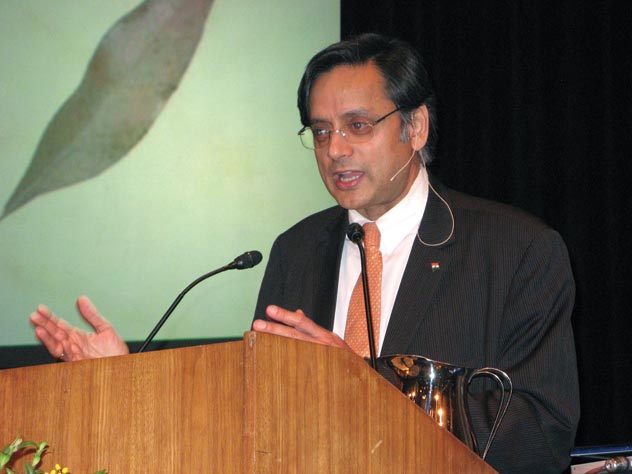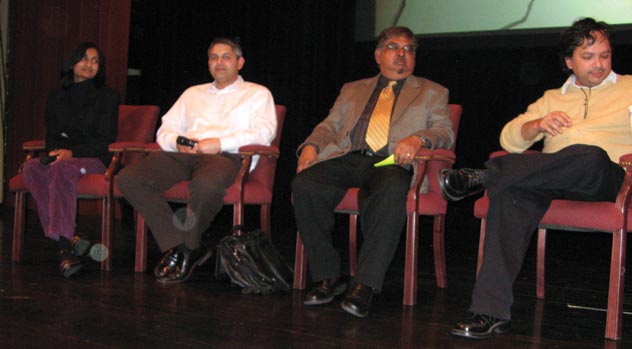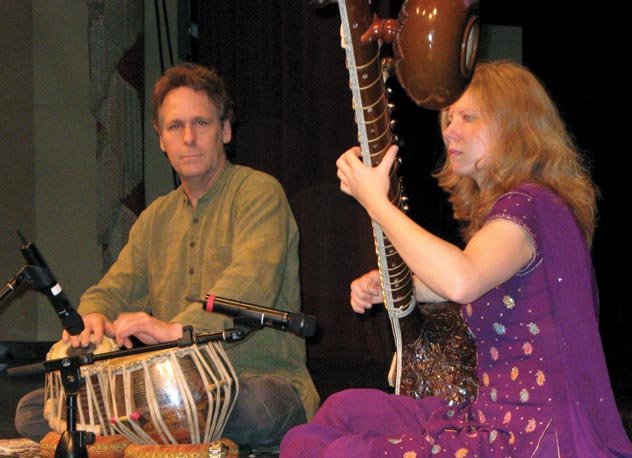|
|
|
ADVERTISEMENTS
|
|
PREMIUM
- HAPPY HOLIDAYS!
- Siliconeer Mobile App - Download Now
- Siliconeer - Multimedia Magazine - email-Subscription
- Avex Funding: Home Loans
- Comcast Xfinity Triple Play Voice - Internet - TV
- AKSHAY PATRA - Bay Area Event - Sat. Dec 6
- Calcoast Mortgage - Home Loans
- New Homes in Silicon Valley: City Ventures - Loden Place - Morgan Hill
- Bombay to Goa Restaurant, Sunnyvale
- Buying, Sellling Real Estate in Fremont, SF Bay Area, CA - Happy Living 4U - Realtor Ashok K. Gupta & Vijay Shah
- Sunnyvale Hindu Temple: December Events
- ARYA Global Cuisine, Cupertino - New Year's Eve Party - Belly Dancing and more
- Bhindi Jewellers - ROLEX
- Dadi Pariwar USA Foundation - Chappan Bhog - Sunnyvale Temple - Nov 16, 2014 - 1 PM
- India Chaat Cuisine, Sunnyvale
- Matrix Insurance Agency: Obamacare - New Healthcare Insurance Policies, Visitors Insurance and more
- New India Bazar: Groceries: Special Sale
- The Chugh Firm - Attorneys and CPAs
- California Temple Schedules
- Christ Church of India - Mela - Bharath to the Bay
- Taste of India - Fremont
- MILAN Indian Cuisine & Milan Sweet Center, Milpitas
- Shiva's Restaurant, Mountain View
- Indian Holiday Options: Vacation in India
- Sakoon Restaurant, Mountain View
- Bombay Garden Restaurants, SF Bay Area
- Law Offices of Mahesh Bajoria - Labor Law
- Sri Venkatesh Bhavan - Pleasanton - South Indian Food
- Alam Accountancy Corporation - Business & Tax Services
- Chaat Paradise, Mountain View & Fremont
- Chaat House, Fremont & Sunnyvale
- Balaji Temple - December Events
- God's Love
- Kids Castle, Newark Fremont: NEW COUPONS
- Pani Puri Company, Santa Clara
- Pandit Parashar (Astrologer)
- Acharya Krishna Kumar Pandey
- Astrologer Mahendra Swamy
- Raj Palace, San Jose: Six Dollars - 10 Samosas
CLASSIFIEDS
MULTIMEDIA VIDEO
|
|
|
|
|
EVENT:
India Rising: Tradition Meets Modernity
Humanities West presented an interdisciplinary program on India at San Francisco’s Herbst Theater featuring Shashi Tharoor, Vikram Chandra and UC Berkeley sociologist Raka Ray. A Siliconeer report.

(Above): Shashi Tharoor, author and former UN diplomat, delivering the keynote address at a two-day program on India at the Herbst Theater, San Francisco, hosted by Humanities West, a San Francisco Bay Area nonprofit.
San Francisco Bay Area nonprofit Humanities West put together a rich, talented group of speakers to dwell on a diverse range of issues during a two-day event on India.
“India Rising: Tradition Meets Modernity,” a two-day program of lectures, discussions, and musical presentations, explored the dynamic fusion of modern Indian culture, where ancient tradition meets current innovation and is revealed in contemporary art, literature, film, and music.
The program took place Feb. 27-28 at the Herbst Theatre in San Francisco.
The event had its stars: diplomat and author Shashi Tharoor, author and UC Berkeley instructor Vikram Chandra were on hand. UC Santa Cruz historian Dilip Basu gave a audio visual presentation on the work on master filmmaker Satyajit Ray, and there were also presentations on Indian art and music.
India is sexy now. It’s remarkable that within just a few decades, its standing in the West in general and the United States has undergone a remarkable makeover.
Gone are the days when the predominant U.S. notion of India was regarding its poverty. It was maligned for its socialism at home its suspicious dabbling in non-alignment and rapprochement with the Soviet Union. Now India is all about economic reforms, IT prowess, IIT and bright professionals.
How did this change in perception come about? Keynote speaker Shashi Tharoor, author and distinguished former UN diplomat, argued in an engaging lecture chock full of anecdotes, quips and statistics that India’s influence transcended conventional economic and military power — it was about its longstanding cultural traditions, its democratic aspirations.
Both Tharoor and later UC Berkeley sociologist Raka Ray added a welcome and prudent note of caution, noting that India’s masses of poor and illiterate still present a daunting challenge.
However, both went a bit overboard in their more ebullient pronouncements.
Take the observation by Tharoor regarding the popularity of Indian cuisine in England, which he seem to imply engendered a greater regard for India. For a savvy diplomat, that’s an oddly shaky assumption.
For how many decades have Americans been enjoying chop suey and tacos? Nobody can seriously argue that has ever translated into a keener regard for the Chinese and Mexicans. Many U.S. cities have a devoted following of the delicious Vietnamese noodle soup pho, but Americans remain shockingly apathetic about the life, culture and history of the hapless nation which lost millions in a war where the U.S. dropped more bombs than in World War II.
In the U.S., soft power just doesn’t cut it.

(Above): Art historian Santhi Kavuri-Bauer, ethnomusicologist Dard Neuman, Satyajit Ray enthusiast Dilip Basu and author Vikram Chandra at a panel at a two-day program on India hosted by Humanities West.
Public standing of foreign countries often follows official State Department with a degree of acquiescence that would make the old Soviet Union green with envy.
It wasn’t the fortune cookie that changed attitudes towards China. After decades of demonization, its standing took a dramatic turn for the better after Nixon’s 1972 trip to China, and then went one step further with the ascendancy of Deng Xiao Ping and his pro-market policies.
On an official level, Indo-U.S. ties changed dramatically only after the Indian reforms of Narasimha Rao. That’s the way it goes in the U.S., when one day, the U.S. can back Iraq’s Saddam Hussein in his war against Iran, and the next day, he can be the worst thug since Hitler.
Precisely how much soft power can alter this is unclear — it seems more likely that it was India’s key policy changes and its growing economic visibility that has changed U.S. official and public perception, and a greater interest in things Indian has followed in its wake, rather than the other way around.
Raka Ray brought in a fascinating chapter of Indian popular entertainment, the Indian Idol television reality show that has drawn contestants from all over India.
“There are clearly vast changes going on in India. But if we know only the economic aspects of this, we really understand very little. I’ve tried to show through popular culture how we can get a glimpse of this newly aspirational middle class, a class that is seizing every opportunity that they are given to participate in the life of this country, a life in which they have until now, weren’t even observers,” she said.
Well, yes and no. It is true that a lot of people are getting caught up in the fever, but it is by no means clear their odds are any better than the odds of getting into IITs.
The fact of the matter is that the show is an elaborate con that fattens the coffers of television stations and the cell phone companies. It’s not unlike the lottery jackpots in this country — sure, Joe Sixpack may win 20 million dollars, but the whole thing is a huge ripoff for millions of people, while the lottery owners laugh all the way to the bank.
That said, there was plenty of thought provoking material in the astonishingly diverse offering at the event — in fact a lot in both Tharoor and Ray’s lectures itself — that offered valuable glimpses into India that you are not going to get in your local newspaper.
Although they were present on the sidelines, relatively speaking, the performance of Joanna Mack and Tim Witter presented a very heartening instance of the crossover appeal of culture that defied Rudyard Kipling’s gloomy prognostication of the permanent divide between the East and the West.

(Above): Joanna Mack on the sitar, accompanied by Tim Witter on the tabla at a two-day program on India organized by Humanities West, a San Francisco Bay Area nonprofit.
Joanna Mack began her pursuit of classical north Indian music in 1997. While studying Neuroscience at UCSD, she attended a classical Indian music class with sitar virtuoso Kartik Seshadri, and abandoned her plan for medical school and devoted herself to Indian classical music.
Tim Witter began his tabla training with Ustad Alla Rakha in 1980. He has studied since 1985 with Pandit Swapan Chaudhuri, the resident tabla teacher at the Ali Akbar College of Music. He has made numerous trips to India for study and performance.
Santhi Kavuri-Bauer, assistant professor of art history, San Francisco State University, presented an illustrated lecture that traced the development of modern art in India starting with the adaptation of the academic style by Raja Ravi Varma in the 1880s through the period of creative tension among those seeking to reconcile Western styles with traditional subject matter and practice, including Abanindranath Tagore, Nandalal Bose, Amrita Sher Gil. After Independence, artists like M.F. Husain, Jamini Roy and F.N. Souza began to explore more abstract and personal themes. She concluded by focusing on several contemporary artists, who combine traditional symbols, forms and processes with modern media techniques, such as digital photography, and address the important social issues facing India today.
Dard Neuman, Kamil and Talat Hasan Endowed Chair in Classical Indian Music, UC Santa Cruz, lectured on Indian music, with rare recordings.
More information on Humanities West is available at www.humanitieswest.org
|
|
|
|
|
|